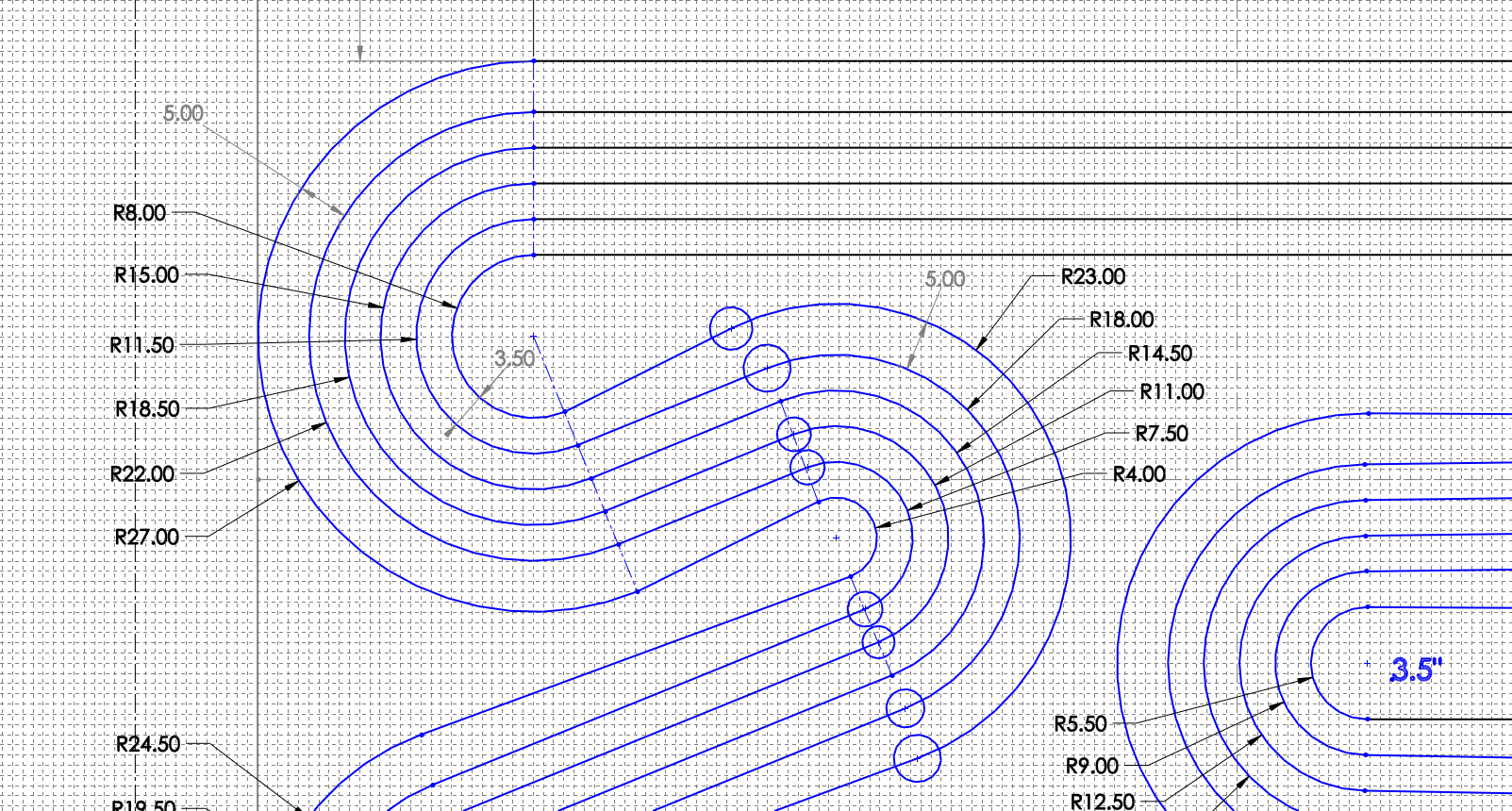Hello, everyone,
Thanks, Gregory, for the new member add!
OK, I have wanted to build a wood track for many years. I have two young grandsons that would love this hobby and the disciplines involved within it.
Now that I'm retired and have the means and have an idea for a four-lane 1/32 sized track in my walkout basement I need some help with some of the geometry for the turns and how I would need to fabricate (route) it. I have been watching and reading Steve Ogilvie's content and have picked up some great information. I would like this track to be like a commercial track like Steve Ogilvie builds and have been designing around those ideas. I think I had better stick with a flat track but would like a few bank turns if I can get a good understanding of all the required geometry.
I currently have designed a 74-foot outer lane track that originally had all 3.5" lane spacing wall to wall. But after researching further, I feel the a 3.5" outer turn apron may be too narrow and think I can do a 4.5" outer apron. If you look at my track layout you can see the wider outer 4.5" turn gutter aprons but I cannot figure out how to route this track with the wider 4.5" outer gutter apron blending into the 3.5" inner apron on a opposite turn.
I have seen track builds with lane spacing all the same where a router pin template is used and the builder started with getting a finished outer track edge formed then began routing the outer slot then moved inward to the next slot. I don't think that method will work for my track layout.
I sure could use some clarification and guidance to get me understanding the concept. Any support out there to get me on my way.
Thanks!

































